#Orrin Keepnews
Explore tagged Tumblr posts
Text
"The Cannonball Adderley Quintet in San Francisco:" A Defining Moment for Soul-Jazz
Introduction: In October 1959, something transformative happened at The Jazz Workshop in San Francisco. Amidst a standing-room-only crowd, the Cannonball Adderley Quintet recorded what would go on to be a groundbreaking live album—”The Cannonball Adderley Quintet in San Francisco.” This album not only catapulted alto saxophonist Julian “Cannonball” Adderley to further prominence, but it also…
#Bobby Timmons#Cannonball Adderley#Cannonball Adderley Quintet#Classic Albums#Jazz History#Kind of Blue#Louis Hayes#Miles Davis#Nat Adderley#Orrin Keepnews#Oscar Pettiford#Randy Weston#Sam Jones#The Cannonball Adderley Quintet in San Francisco
5 notes
·
View notes
Text
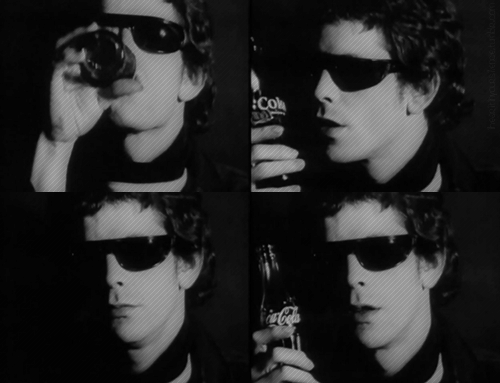


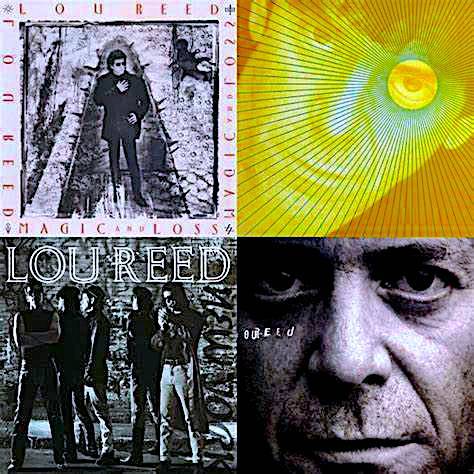
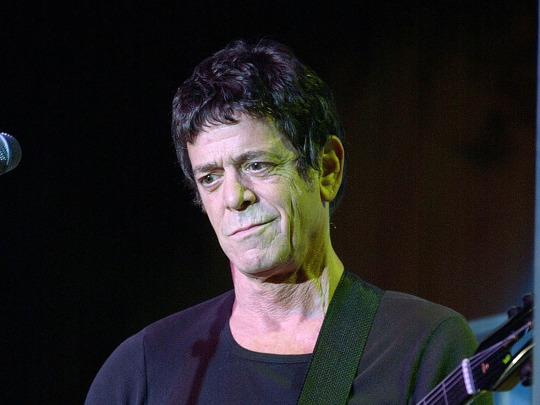

HAPPY BIRTHDAY to Desi Arnaz, Benedict of Nursia, Moe Berg, Ed Bournemann, Dale Bozzio, Larry Carlton, Karen Carpenter, John Cowsill, Daniel Craig, John Cullum, Eddie “Lockjaw” Davis, Maxwell Street, Jimmy Davis, Becky G, Rory Gallagher, John Gardner, Mikhail Gorbachev, Laird Hamilton, Sam Houston, Bryce Dallas Howard, John Irving, Jennifer Jones, Léon Jongen, Jon Bon Jovi, Orrin Keepnews, the 1933 film KING KONG, Papa Lightfoot, BarBara Luna, Madonna’s 1989 single “Like a Prayer,” Chris Martin, Gates McFadden, drummer-producer Tony Meehan (The Shadows), Method Man, Wolfgang Muthspiel, Lauraine Newman, Jay Osmond, Ethan Peck, Elvis Presley’s 1956 single “Lawdy Miss Clawdy,” Luke Pritchard (The Kooks), Dottie Rambo, Red Saunders, Dennis Seaton (Musical Youth), Shostakovich’s 14th Symphony (1969), Bedřich Smetana, the 1995 musical SMOKY JOE’S CAFÉ, Ludovico Spontoni, the 1965 film SOUND OF MUSIC, composer-trumpeter Derek Watkins (James Bond films), Kurt Weill, Tom Wolfe, "Théo" Ysaÿe, and the creative provocateur, poet, and singer-songwriter Lou Reed. He was the principal songwriter for The Velvet Underground and his solo career spanned 5 decades.
Velvet Underground were not commercially successful but are now regarded as one of the most influential bands in the history of rock. Brian Eno said that everyone who heard the first VU album wanted to start a band. Reed had a deadpan voice that, for me, required forgiveness as singers go (though he did step up on occasion, particularly when he sung with The Blind Boys on THE RAVEN album). Eventually I connected with his noir fiction, transgressive “eyewitness reporting” lyrics and songcraft. He neither approved or disapproved of the subjects he sang about and, in the end, he just wanted to write catchy rock’n’roll. Over the years I’ve performed at least 6 Reed/VU songs—recording 2: “What Goes On” and “Sunday Morning,” on which I was joined by members of The Badlees (who did a splendid job in one afternoon). Reed himself commended our cover and promoted it on his website in the mid-90s. HB and RIP Lou.
#loureed #velvetunderground #sundaymorning #singersongwriter #bretalexander #thebadlees #blindboysofalabama #raven #edgarallenpoe #noirfiction #poet #guitarist #eyewitnessreport #johnnyjblair #singeratlarge #birthday
#johnny j blair#singer songwriter#music#singer at large#san francisco#pop rock#Lou Reed#Velvet Underground#birthday#The Badlees#noir fiction#Bandcamp
12 notes
·
View notes
Text

Bobby Hutcherson – Cruisin’ the ‘Bird
Cruisin’ the ‘Bird is an album by vibraphonist Bobby Hutcherson featuring performances recorded in 1988 and released on Orrin Keepnews’ Landmark label.
Bobby Hutcherson – vibraphone, marimba Ralph Moore – soprano saxophone, tenor saxophone Buddy Montgomery – piano Rufus Reid – bass Victor Lewis – drums
3 notes
·
View notes
Text
Amazing Bill Evans music playlist: 30 tracks (Best jazz collection)
Amazing Bill Evans music playlist: 30 tracks (Best jazz collection) Best Sheet Music download from our Library.Track List: Please, subscribe to our Library. Thank you! Bill Evans biographyFirst recordings 1960s 1970s
Amazing Bill Evans music playlist: 30 tracks (Best jazz collection)

https://www.youtube.com/watch?v=qjKtO7cus4U Track List: 0:00:00 Bill Evans Trio - My Foolish Heart 0:04:56 Bill Evans Trio - Like Someone In Love 0:11:22 Bill Evans Trio - When I Fall In Love 0:16:15 Bill Evans Trio, Stan Getz - But Beautiful 0:22:01 Bill Evans Trio - Polka Dots And Moonbeams 0:27:01 Bill Evans - I Loves You Porgy 0:33:04 Bill Evans Trio - I Wish I Knew 0:37:45 Bill Evans - The Peacocks 0:43:58 Bill Evans Trio - Young And Foolish 0:49:51 Bill Evans, Bob Brookmeyer - As Time Goes By 0:56:46 Bill Evans Trio - Waltz For Debby 1:03:48 Bill Evans Trio - Alice In Wonderland 1:12:24 Bill Evans Trio - Autumn Leaves 1:18:22 Bill Evans Trio - Danny Boy 1:22:06 Bill Evans - Here's That Rainy Day 1:27:28 Bill Evans - Midnight Mood 1:32:46 Bill Evans - Emily 1:37:39 Bill Evans - Peace Piece 1:44:20 Bill Evans - Never Let Me Go 1:58:47 Bill Evans, Jim Hall - Skating In Central Park 2:04:12 Bill Evans, Jim Hall - Romain 2:09:37 Bill Evans - Love Theme From 'Spartacus' 2:14:47 Bill Evans Trio - Spring Is Here 2:19:53 Bill Evans Trio - My Romance 2:21:55 Bill Evans Trio - I'll See You Again 2:25:51 Bill Evans Trio - Come Rain Or Come Shine 2:29:11 Tony Bennett, Bill Evans - You Must Believe In Spring 2:35:03 Bill Evans Trio - Nardis 2:40:55 Bill Evans - Soiree 2:44:22 Bill Evans - Comrade Conrad
Bill Evans biography
Bill Evans ( Plainfield , August 16 , 1929 - Fort Lee , September 15 , 1980, born William John Evans , was an American jazz pianist and composer. Bill Evans was born in New Jersey to Harry L. Evans, born in Wales and Mary Saroka Evans, born in Rusyne, both lovers of music. They make him study piano and, as a second instrument, violin (which he will give up after two years) and then flute . When he was a teenager he began to be interested in jazz , and in particular by Bud Powell, Nat King Cole , George Shearing and Lennie Tristano; he plays in orchestras as a local amateur . Bill Evans continued his musical studies at Southern Louisiana College, graduating in 1950. After a brief stint in clarinetist Herbie Fields' orchestra, he spent three years in the Army as a flautist , stationed at Fort Sheridan. It will preserve for a long time a bitter memory of these years. Demobilized in 1954, he began playing and recording with New York's minor orchestras (the best known being the "variety" orchestra led by Jerry Wald), while taking composition classes at the Mannes School of Music. First recordings In 1955, he was noticed by the composer and theoretician of the "lydian concept" George Russell who invited him to record the album The Jazz Workshop with his "jazz smalltet" (1956) and then the title All about Rosie on the collective album Brandeis Jazz Festival (1957). Russell and Evans would later reunite for other albums: New York, NY (1959), Jazz in the Space Age (1960), Living Time (1972). In September 1956, Bill Evans recorded under his own name, for the Riverside label (with producer Orrin Keepnews), the trio New Jazz Conceptions with Teddy Kotick on double bass and Paul Motian on drums. If Bill Evans had not yet found the interaction that will characterize his approach to the jazz trio, he already demonstrates his innovative harmonizing technique on this album. After this album and his work with Russell made him known, Bill Evans became an in-demand studio musician and many musicians called on his services, including Tony Scott, Don Elliott, Eddie Costa, Jimmy Knepper, Helen Merrill, Sahib Shihab and Charles Mingus . Alongside John Coltrane and Cannonball Adderley ' regular sextet, Between February and November 1958, he was part of Miles Davis . In 1959, the trumpeter called him back for the recording of the Kind of Blue album . Miles Davis has always recognized the importance of Evans' contribution to this emblematic record of modal jazz . After this interlude with Miles Davis , Bill Evans resumed an intense career as a sideman - which did not stop until 1963, the date of his contract with Verve - recording, among others, with Cannonball Adderley , Michel Legrand , Art Farmer, Chet Baker , Lee Konitz , John Lewis, Oliver Nelson, Kai Winding , JJ Johnson and Bob Brookmeyer. At the same time, although he did not have a regular trio, he recorded records with this formula under his own name: Everybody digs Bill Evans (1958) and On Green Dolphin Street (1958 – unreleased at the time). 1960s In 1959, he formed a regular trio with bassist Scott LaFaro and drummer Paul Motian. The three partners, breaking with the tradition in which the double bass player and the drummer were limited to an accompanying role, dedicate themselves to an authentic "three-way improvisation". It is this "interaction" – this constant synergy between the three musicians – that makes this trio specific and modern. The three recorded four albums: Portrait in Jazz (1959), Explorations (1961) and especially two legendary albums from the same session at the Village Vanguard in New York: Waltz for Debby and Sunday at the Village Vanguard. Scott LaFaro died in a car accident just ten days after recording these records. Deeply affected by the death of LaFaro, Bill Evans, although he continues his career as an accompanist (albums as an accompanist for Mark Murphy , Herbie Mann, Tadd Dameron , Benny Golson …), does not record anything as a trio during almost a year Under his name, he recorded, in duo with Jim Hall, the album Undercurrent . It wasn't until May 1962 that he found himself in the studio as a trio, this time with Chuck Israels on double bass and Paul Motian on drums. What comes out of these sessions are the albums How My Heart Sings! and Moon Beams . In late 1962 - early 1963, he recorded his last albums for the Riverside label: Interplay (as a quintet with Freddie Hubbard and Jim Hall), Loose Blues (as a quintet with Zoot Sims and Jim Hall, unreleased at the time ), At Shelly's Manne-Hole (as a trio with Chuck Israels and Larry Bunker), and 13 solo tracks ( The Solo Sessions: Volume 1 & 2 - unedited at the time). Breaking album time with his usual trio, he recorded in 1962 for Verve trio album , while still under contract with Riverside, the Empathy of which Shelly Manne was co-leader. Evans signs with Verve-MGM. For Verve , Bill Evans will continue to record with his usual trios, but Creed Taylor, then producer of the label, will push him to diversify his production: albums with other stars of the brand ( Stan Getz , Gary McFarland…), solo, re-recording, with symphony orchestra… Between 1962 and 1969, the personnel of Evans' "regular" trio was reworked quite frequently. Between 1962 and 1965, Chuck Israels was occasionally replaced on double bass by Gary Peacock ( Trio '64 ) and veteran Teddy Kotick. From 1966 and for 11 years, Eddie Gómez will occupy the position of double bass player. The successive drummers were Larry Bunker ( Live ( 1964 ), Trio '65 ), Arnold Wise ( Bill Evans at Town Hall , 1966), Philly Joe Jones ( California, Here I Come , 1967), Jack DeJohnette ( Bill Evans at Montreux Jazz ). Festival , 1968) and, more briefly, Joe Hunt and John Dentz. In 1969, drummer Marty Morell joined the trio, remaining until 1975. During this period, on European tours, Evans sometimes travels without his usual accompanists and then turns to "local" musicians: Palle Danielsson, Niels-Henning Ørsted Pedersen, Rune Carlsson (1965), Alex Riel (1966)… During his Verve period , Evans recorded with different formulas than his "usual trio". He recorded Alone (1968) . He re-recorded Conversations with Myself (1963), then Further Conversations with Myself (1967). With string orchestra (conducted by Claus Ogerman) and trio, Bill Evans trio with symphony orchestra (1965). With other musicians, Gary McFarland (1962), Stan Getz (1964), Monica Zetterlund ( Waltz for Debby , 1964), Jim Hall ( Intermodulation , 1966), Shelly Manne ( A Simple Matter of Conviction - 1966), Jeremy Steig ( What's New , 1969). Here ends the "Verve Period", with the album From Left to Right (1970), a recording on the border between light music and jazz, where Bill Evans, accompanied by a string orchestra, uses the electric piano for the first time " Fender Rhodes ". It should be noted that Evans' last albums for Verve are no longer produced by Creed Taylor but by Helen Keane (Evans' artistic agent since 1962). From the end of the contract with Verve , it is Helen Keane who will act as "coach" of the pianist's career. It will be the producer of the records that Evans will record for Columbia , CTI Records, Fantasy and Warner Bros. 1970s Between 1969 and 1975, Bill Evans performed mainly with Eddie Gómez and Marty Morell. This trio recorded many albums: among others, Jazzhouse , You're Gonna Hear From Me (1969), Montreux II (1970), The Bill Evans Album (1971), The Tokyo concert , Half Moon Bay (1973), Since We Met , Re: Person I Knew, Blue in green (1974). During this period, Bill Evans participates in two recordings quite far removed from his usual productions: Living Time , an experimental composition for piano and large ensemble by George Russell (1972) and Symbiosis (1974), a concerto for piano and orchestra by "Third stream music" composed by Claus Ogerman. He also recorded at this time two duet albums with Eddie Gómez ( Intuition - 1974, Montreux III - 1975) and one solo ( Alone (Again) - 1975). Evans also recorded two sessions ( The Tony Bennett: Bill Evans Album - 1975, Together again - 1976) with crooner Tony Bennett . Finally, Evans signs his last record in re-recording, New Conversations (1978). In 1976, Marty Morell was replaced on drums by the understated but subtle Eliot Zigmund. This will remain the last rhythm that will be perfectly integrated into the pianist's universe. The trio thus composed finds a second wind and records I Will Say Goodbye (1977, published in 1980, after the death of the pianist) and the elegiac You Must Believe in Spring (1977, published in 1981). The three men also recorded Crosscurrents (1977) with Lee Konitz and Warne Marsh. Eddie Gómez left Evans in 1978. After trying numerous double bass players (Michael Moore, Michel Donato…), Evans hired the young Marc Johnson. and Larry Schneider was recorded It was around this time that the Affinity quintet album with Toots Thielemans . In 1979, he reunited with Larry Schneider but this time with Tom Harrell , for another quintet album, We will meet again . For a brief period, "veteran" Joe Philly Jones returned to fill in as drummer, before Evans hired another young musician, Joe LaBarbera. There are no studio recordings of this definitive trio. On the other hand, it was recorded a lot in discos or in concerts ( Homecoming , The Paris concert. ed. 1 & 2 , Turn out the stars: the final recordings of Village Vanguard , The Last Waltz , Consecration …). All these recordings were only published after the death of the pianist. The music of this trio is the "swan song" of the pianist. He performed for the penultimate time in August 1980 at the Molde Jazz Festival. On September 15, 1980, at the age of fifty-one, with poorly treated hepatitis , his body exhausted by addiction too long a drug ( heroin in the 60s and 70s, cocaine at the end of his life), Bill Evans died as a result of internal bleeding. Discography Bill Evans' discography is particularly important. In addition to "official" recordings for labels such as Riverside, Verve , CTI, Columbia , Fantasy and Warner Bros. Records , there are a significant number of more or less official albums. Musical compositions B minor waltz Bill's belle (àlies Just a beginner in love ) Bill's hit tune Blue in Green (co-author Miles Davis ) C minor blues chase Carnival Catch the wind (àlies Get yourself another fool ) Children's play song Chromatic tune Comrade Conrad (aka Theme for Crest ) Displacement Epilogue Five For Nenette (alias In April ) Fudgesicle built for two Fun ride Funkallero Funny man G waltz Here's something to you Hollywood (written with Claus Ogerman ) Interplay It's love, it's Christmas It must be love * Knit for Mary F. Laurie (alias The dream ) Letter To Evan Loose blues Maxine My bells NYC's: no lark One for Helen Only child The opener Orbit (alias Unless it's you ) Peace Piece Peri's scope Prologue Re: person I knew Remembering the rain Show type tune (alias Tune for a lyric ) A simple matter of conviction Since we met Song for Helen Story line Sugar plum * (coautor John Court) Theme: what you gave (àlies Don't count your dreams till they come true! ) There came you These Things Called Changes 34 skidoo Tiffany Time remembered Turn out the stars Twelve tone tune (alias TTT ) Twelve tone tune two (aka TTTT ) The two lonely people (àlies The man and the woman ) Very early Walkin' up Waltz for Debby Waltz in Eb We will meet again Yet ne'er broken Your story Read the full article
1 note
·
View note
Audio
Chet Baker - Chet (1959)
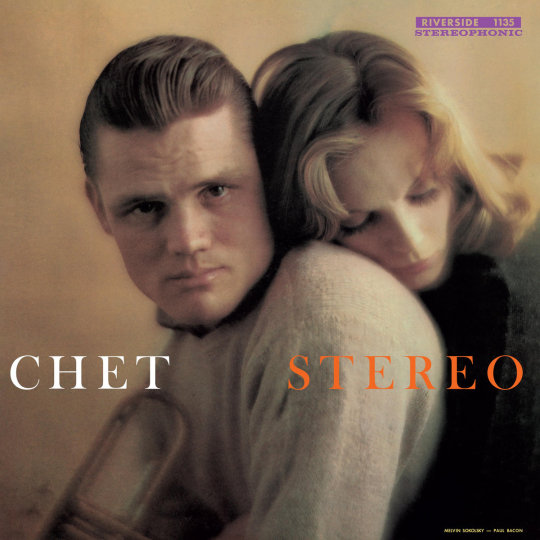
#chet baker#chet#1959#1950s#riverside#craft recordings#jazz#cool jazz#trumpet#paul chambers#bill evans#kenny burrell#herbie mann#philly joe jones#connie kay#pepper adams#orrin keepnews#howard dietz#jack higgins#richard rodgers#cole porter#lorenz hart#kurt weill
32 notes
·
View notes
Text


1988
#history#vintage#jazz#orrin keepnews#the view from within#music#1980s#1988#music criticism#literature#book#writing#author
2 notes
·
View notes
Photo

Orrin Keepnews on the Bill Evans Interplay Sessions
Steven Cerra has reprinted a fascinating chapter in Orrin Keepnews’s The View From The Inside, Jazz Writings 1948-1987, about Bill Evans’s recording activity at Riverside Records in general and about his Interplay sessions in particular.
-Michael Cuscuna
Read and listen… Follow: Mosaic Records Facebook Tumblr Twitter
2 notes
·
View notes
Audio
Johnny Griffin and Eddie "Lockjaw" Davis Quintet - Epistrophy (February 1961) Thelonious Monk / Kenny Clarke from: "Lookin' at Monk" LP "Johnny Griffin, The Complete Recordings: 1960-1962" (2014 Compilation)
Personnel: Johnny Griffin: Tenor Saxophone Eddie "Lockjaw" Davis: Tenor Saxophone Junior Mance: Piano Larry Gales: Bass Ben Riley: Drums
Produced by Orrin Keepnews
Recorded in New York City, February 7, 1961

Johnny Griffin / Eddie "Lockjaw" Davis
#Jazz#Bop#Johnny Griffin#Thelonious Monk#Eddie Lockjaw Davis#Orrin Keepnews#60's#Epistrophy#Bebop#Tenor Saxophone#Kenny Clarke#Lookin' at Monk#Replacing Dead Links#domp3.biz
32 notes
·
View notes
Photo

Wes Montgomery Tro
A Dynamic New Sound
@ 1959 US Pressing (mid 80s reissue)
*****
While even label executive Orrin Keepnews admits that The Wes Montgomery Trio may have fallen short of representing Montgomery's talent, he still felt that this debut captured a large portion of it. Recorded on October 5 and 6 in 1959, guitarist Montgomery is joined by organist Melvin Rhyne and drummer Paul Parker. Montgomery's style, block chords and octaves, is already firmly in place, and he delivers lovely solos on "'Round Midnight," "Whisper Not," and "Satin Doll." The choice of material, in fact, from classics like "Yesterdays" to originals like Montgomery's "Jingles," never falters. The only drawback is that the accompaniment, which though solid, doesn't seem to perfectly match his guitar style. One gets the impression that Montgomery's forceful, deliberate style would be better-served by beefier arrangements. Having said this, Montgomery's performance -- coming at the end of a decade represented by guitarists like Tal Farlow and Barney Kessel -- must have been a revolution in technique and execution. Suddenly, out of nowhere, a 36-year-old guitarist re-imagines the jazz guitar solo. There are two bonus tracks on The Wes Montgomery Trio: extra takes of "Satin Doll" and "Missile Blues." Although later Riverside recordings of Montgomery are more fully realized, fans will enjoy returning to the moment when he first burst upon the jazz scene.
10 notes
·
View notes
Text
October 18, 1959

Cannonball Adderley records live at the Jazz Workshop in San Francisco with Nat Adderley, Bobby Timmons, Sam Jones and Louis Hayes. Orrin Keepnews said this of the session:
It...was the birth of contemporary live recording. That was such a phenomenal success that not only did I do a lot of such recordings afterwards, but I think that virtually all jazz producers felt that it was a good thing to do.
Interestingly, Adderley arrived in San Francisco (his run at the Jazz Workshop had begun October 6) to find that the local musician’s union was segregated. "It was a shock to come from New York to San Francisco and find segregated locals existed here,” he said in a wire service story reprinted in the Pittsburgh Courier. “It's funny that musicians should be classified by the color of their skin. As soon as you find this out, you think that all is not well here."



A very patronizing review from the New York Times:


A thoughtful editorial from Ralph Gleason (who also wrote the liner notes) in the Boston Globe about why jazz is so special live.



A review from Cosmopolitan (sadly, “Meghan Richards” is the pen name of a man named Richard Gehman - who still has great taste):


A review from Seventeen:

youtube
22 notes
·
View notes
Text
Mono? Stereo? Both?
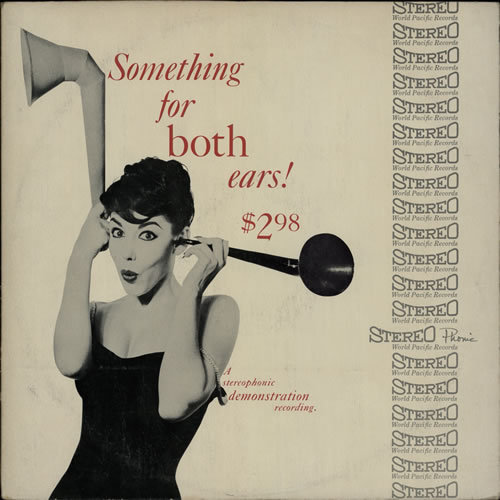
Admit it. You’re flummoxed, fried out and forlorn. And it’s not because your baby left you. No, it’s because you woke up one day and realized you’re a record collector. With a serious problem. And not just the physical kind. It’s true that record collectors suffer from a host of very real problems – lack of social graces from dealing with heavy-handed and judgmental record clerks, bad breath from breathing in mold spores wafting up from water damaged records, plumbers butt, and a scoliosis-like malady called “crate-diggers hump” (not as sexy as it sounds) acquired from years of slouching, sagging and stooping over anything and anyone just to fat-finger a copy of that one record that makes your heart flutter, your spleen ache and your bowels tremble.
No, your current dilemma is a horse of a different color. Which version of your favorite records sound best? The mono or stereo copy? Which one should you buy? Should you buy both? Neither? Your mind is melting.
These days there’s something akin to “Mono Mania” going on in the world of record collecting. To many of us it’s quite welcome. Especially if we’re one of the poor bastards not old enough to have purchased The Kinks Are The Village Green Preservation Society in mono when it came out and we don’t have enough cold, hard cash to buy a minty fresh original flip-back gatefold copy for $425. To us, a sealed mono reissue is just what the doctor ordered.
To others, this mono vs. stereo issue is as baffling as watching your grandmother cut chewing gum out of her dog’s hair. What’s with all these monophonic reissues? To a cynic it seems like it’s the well-orchestrated and profitable reissue of every single recording ever made in a unique mono mix. You’ve seen them poking out of record bins everywhere. They’re typically pressed on 180g vinyl, tucked gently into nice inner sleeves hidden within tip-on covers and created lovingly and painstakingly (note: these are words that usually mean “expensive”) using “the original mono mixes.” But are they better? Sometimes. Sometimes not. Sometimes they’re just different.

This next bit of quasi-intellectual, ponderous gibberish is purely subjective. More so than everything up to this point in this pointless essay. Back in the mid-1960s there were primarily three reasons for buying a mono recording when a stereo recording was also available: you had a hi-fi system with only one speaker (more common that you think), you were deaf in one ear like Brian Wilson of the Beach Boys (look it up) or you were a cheapskate (mono records cost about $1 less per album). Sometimes you were all three. Sad.
Why jump back to the mid-60s? Because that’s a period of time when record buyers had a real choice to make. In most cases you could amble into any record store in the world and buy a great sounding, thick pressing of your favorite record in mono or stereo. Sometimes fake stereo. More on that later. Before the mid-60s, stereo records were a bit of a crap-shoot if you were into rock, blues or jazz. They might sound goofy. With instruments and vocals haphazardly panned left or right. It took a while for engineers to figure out how to make the most of stereo, and at the same time artists were figuring out how they wanted their music to sound.
Classical music is a bit of an exception to this. Conventional wisdom is that stereo recordings of classical music tend to sound better earlier on. And as far as jazz goes, producers and engineers like Rudy Van Gelder, Orrin Keepnews, Creed Taylor and Teo Macero were also a bit of an exception. They got into stereo early on and figured out how to make stereo sound cool with very few microphones. You can read on and on about this (and should) from many sources that are far more expert on this topic than your lazy, stoop-shouldered author.
Speaking of jazz, the jazzbos tend believe that mono is best no matter what. Original 1950s and early 60s pressings of anything on Blue Note, Prestige, Riverside, Impulse and Columbia are more valuable. And it’s true that these mono records often do sound best. To my ears they can sound louder, with clearer sounding instrumentation and, in the very best cases, the sound can seem to pounce out of the speakers. But how much better are they? I used to avoid stereo pressings of jazz records from the mid-60s and earlier. I was under the impression they were “fake stereo” created in dimly lit back rooms in order to jump on the stereo bandwagon. Some are. Some aren’t.
Let’s push on.
Stereo vs. mono. Which is best? It depends on the recording, the vinyl pressing and your personal taste. Sure, there are albums that everyone says are amazing in mono – the pre-1967 records by The Beatles, The Kinks, The Rolling Stones, The Pretty Things, etc. The list goes on and on. But there are recordings that sound more eventful and interesting in stereo (Interstellar Overdrive by Pink Floyd comes to mind). Rock records released between 1967 and 1970 tend to be the ones that are far more subjective. And you’ll find plenty of beard-scratching know-it-alls with strident opinions who’ll tell you what to think. Some of these guys are right. But many of them also live in their divorced mom’s basement and only emerge from their listening lair to attend a record fair or to run out to buy mom a carton of Benson & Hedges cigarettes. Occasionally, they come upstairs to rub their mother’s bunions.
People tend to crave the mono releases in part because they’re so rare. I know I’ve got my faves. I prefer the mono pressing of Sgt. Pepper’s Lonely Hearts Club Band by The Beatles because (to me) it sounds more like a rock band and less like studio frippery. But the songs themselves are not that different. It’s not like hearing the record in mono for the first time could convince you that the stereo record you’ve been listening to your whole life sounds like a Jim Nabors Christmas album. Sometimes the performances are different or mixed peculiarly (the mono mixes of Don’t Pass Me By and Helter Skelter from the Beatles White Album come to mind).
For the purposes of this stupefyingly silly essay, I went back and did some side-by-side listening tests to confirm all my preconceived notions of what I like and don’t like in some hallmark recordings yanked from the overloaded racks in my fantastically disorganized music room. Stereo vs. mono. Which is it?




The Who Sell Out (US mono reissue vs. Japanese stereo reissue):
From memory I thought I preferred the stereo pressing of this. Armenia City In The Sky is a fave of mine and I thought stereo was the only way to hear this tune. Wrong. Not by a crazy wide margin in my case but wrong still. The mono pressing sounded heavier and punchier yet still retained the fun frippery of the studio trickery baked into the tapes on this record. Mono wins.

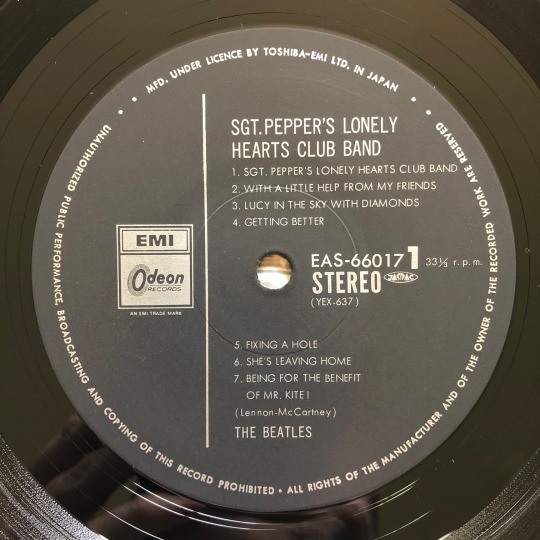


The Beatles “Sgt. Pepper’s Lonely Hearts Club Band” (Japanese stereo reissue vs. UK mono reissue):
I already tipped my hand on this one. As a kid I only heard the stereo copy. Loved it. No issues whatsoever. But, ever since hearing the mono copy of this record in college (several semesters ago) I became a monomaniac. Fact is, this might be the very first record where I became convinced of the majesty of mono. Mono wins.
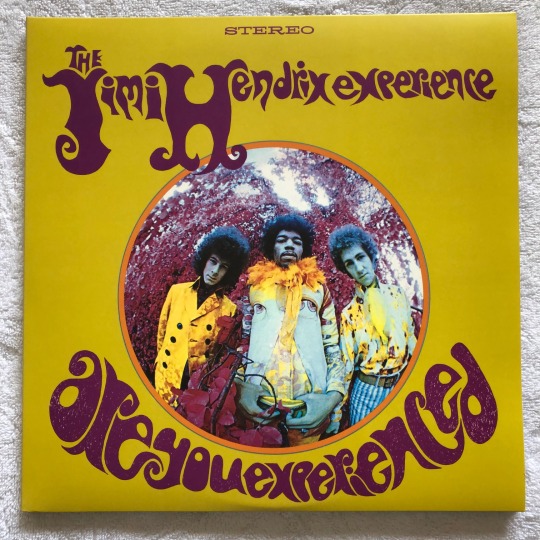



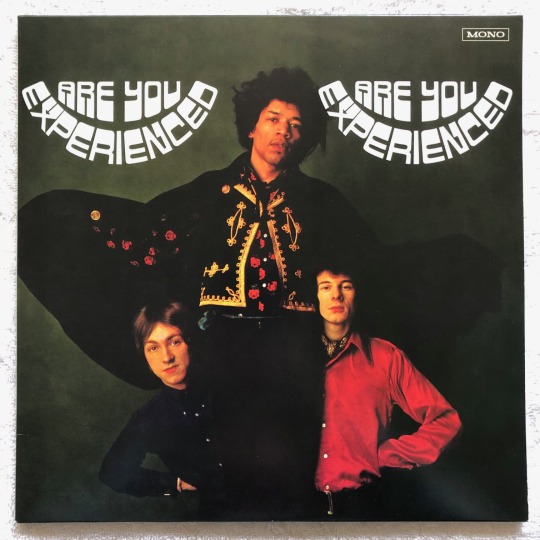
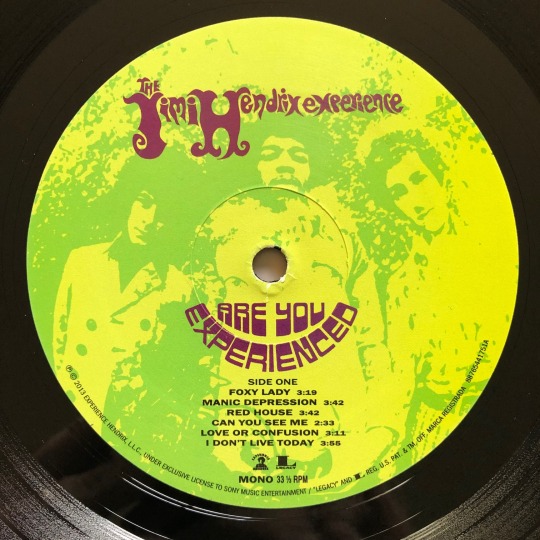
The Jimi Hendrix Experience “Are You Experienced” (Reissues of US stereo, US mono and British mono pressings):
Ok, read anything about this record and the experts will tell you the British mono pressing is the only one worthy of a spin on your turntable. I don’t own an original mono pressing. Who’s got that kind of dough or good fortune? I DO own a mono British reissue. A US mono reissue. A few stereo copies including a stereo reissue (the double LP Hendrix Family version) I used for this test for a couple reasons (it’s readily available at record stores and my copy was also readily available). To my ears the stereo copy is the clearest, coolest sounding and has effective panning and the sort of soundstage tomfoolery that makes stereo fun. To me it’s the best-est. Stereo wins.

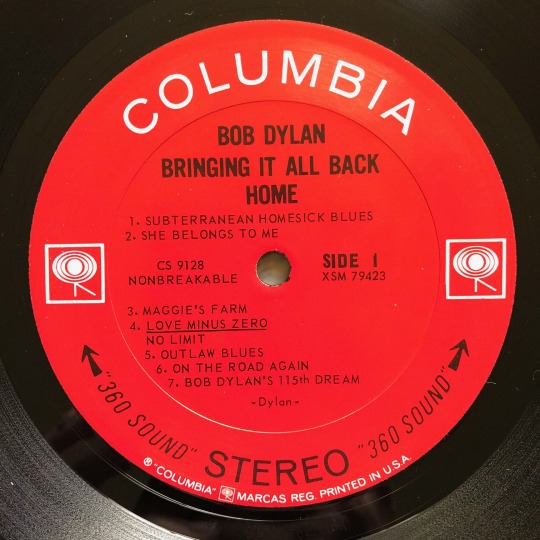


Bob Dylan “Bringing It All Back Home” (US stereo original vs. US mono original):
Here’s another one that the professional listeners with hyper-tuned ears say should ONLY be heard in mono. I remembered liking the mono best years ago. Then I listened today. I compared a mono original to a stereo original. The mono copy was snagged by me only a couple years ago. It had been (mis)priced by someone at a national used bookstore chain. The price was too good to turn down and the record is so clean I sold my mono reissue. The stereo copy I got from my wife’s uncle who owned about 300 records. 290 of those were Irish music except for a few Greenwich Village favorites like Dylan, Baez, Seeger et.al. Despite being a well-loved copy with plenty of tiny hairline scratches and marks, I prefer the stereo copy. To my ears it’s the opposite of what I said about The Who Sell Out. In this case, I thought the stereo had more punch. Stereo wins.

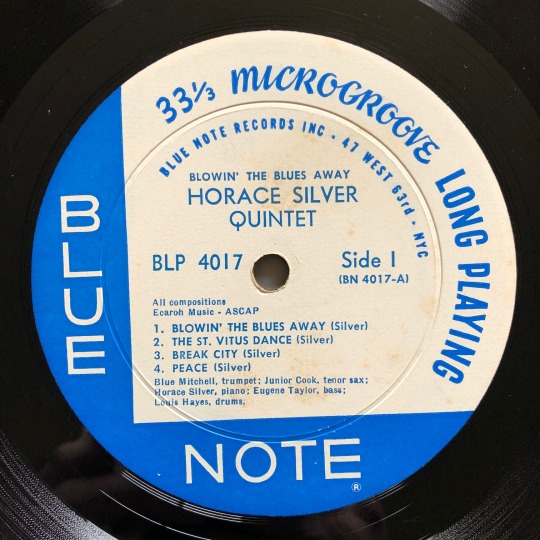
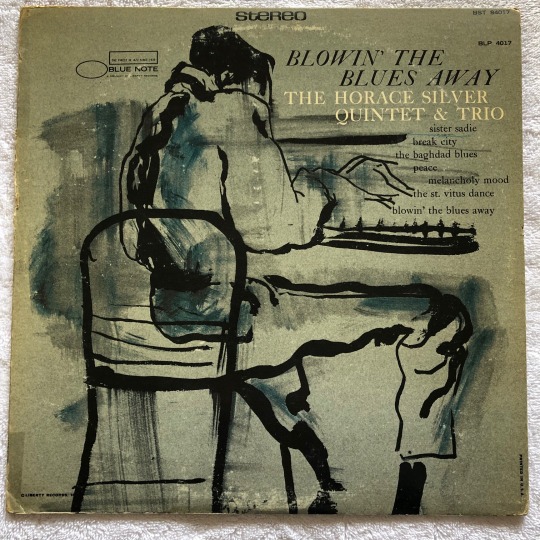

Horace Silver “Blowin’ The Blues Away” (US mono original vs. US stereo reissue):
Ok, one of these is a pricey collectible and the other isn’t. Bet you can guess which is which. I fully expected the expensive mono original pressing to blow away the 70s “black b” pressing. And it is better. Louder. Hotter sounding instruments. In some cases Blue Mitchell’s trumpet is positively piercing. Right up into the red in the mix (God bless Rudy Van Gelder). Same way with Junior Cook’s sax. But, the stereo reissue from the 70s is not bad at all. Nice and punchy. It’s a real stereo recording too. Nothing fake about it. Rudy Van Gelder recorded this session in stereo and mono in 1959 and he’s one of the few cats who knew what he was doing in the late 50s. Make no mistake, the mono is better. But if I found these two records cozied up together in a bin at my local record shop and the mono OG was $150 and the stereo reissue was $10 I’d buy the stereo copy in a heartbeat and spend the rest of the money on elocution lessons so I could sound smarter. Mono wins.
Note: I’ve found that most of these “black b” Blue Notes sound pretty good. I also love corduroy and canned beer so take that with a grain of salt.
Bottom line? It turns out the ears are the best test. Do YOU like how the record sounds? That’s what matters most. I prefer some mono records and some stereo pressings. I’ve even dabbled in fake stereo from time to time. I happen to love some records that have been “electronically re-recorded to simulate stereo.” After all, in many ways, life is a simulation. I can’t say I love tons of fake stereo records but I do love a few. In fact there are a few country music titles that fall into this sadly maligned category that I hold dear to my heart.
Here’s the insidious thing. Record collectors often have mono and stereo copies of their favorites. Sometimes the really sick bastards have multiple copies of pressings from all over the world. These people should be celebrated or pilloried. I’m not sure which. Perhaps a little bit of both?
Records. In the end I feel like we’re living and breathing in the promises and perils of records at the same time. Plumbing the depths of the dollar bin and scaling the heights of a pricey wall of record store collectibles. Sometimes on one dirty, dimly lit Saturday afternoon. And I loathe hyperbole. Sort of.
Mono. Stereo. Both. Indeed.
#vinyl#records#mono#stereo#beatles#thewho#jimihendrix#bobdylan#horacesilver#bluenote#bluenoterecords#deepgroove#rudyvangelder#orrinkeepnews#teomacero#impulserecords#parlophone#trackrecords#emirecords#polydor#columbiarecords#recordstores
5 notes
·
View notes
Text
"Brilliant Corners:" Thelonious Monk's Masterpiece of Innovation and Complexity
Introduction: Released in 1957, “Brilliant Corners” stands as one of Thelonious Monk’s most important and innovative recordings. It was Monk’s third album for Riverside Records, and his first to feature primarily original compositions. The album marked a significant moment in Monk’s career, showcasing his unique approach to jazz composition and performance. More than just a collection of songs,…
#Brilliant Corners#Clark Terry#Classic Albums#Denzil Best#Ernie Henry#Jazz History#Max Roach#Orrin Keepnews#Oscar Pettiford#Pannonica de Koenigswarter#Paul Chambers#Sonny Rollins#Thelonious Monk
4 notes
·
View notes
Video
youtube
HAPPY BIRTHDAY to Desi Arnaz, Benedict of Nursia, Moe Berg, Ed Bournemann, Dale Bozzio, Larry Carlton, Karen Carpenter, John Cowsill, Daniel Craig, John Cullum, Eddie “Lockjaw” Davis, Maxwell Street, Jimmy Davis, Becky G, Rory Gallagher, John Gardner, Mikhail Gorbachev, Laird Hamilton, Sam Houston, Bryce Dallas Howard, John Irving, Jennifer Jones, Léon Jongen, Jon Bon Jovi, Orrin Keepnews, the 1933 film KING KONG, Papa Lightfoot, BarBara Luna, Madonna’s 1989 single “Like a Prayer,” Chris Martin, Gates McFadden, drummer-producer Tony Meehan (The Shadows), Method Man, Wolfgang Muthspiel, Lauraine Newman, Jay Osmond, Ethan Peck, Elvis Presley’s 1956 single “Lawdy Miss Clawdy,” Luke Pritchard (The Kooks), Dottie Rambo, Red Saunders, Dennis Seaton (Musical Youth), Shostakovich’s 14th Symphony (1969), Bedřich Smetana, the 1995 musical SMOKY JOE’S CAFÉ, Ludovico Spontoni, the 1965 film SOUND OF MUSIC, composer-trumpeter Derek Watkins (James Bond films), Kurt Weill, Tom Wolfe, "Théo" Ysaÿe, and the creative provocateur, poet, and singer-songwriter Lou Reed. He was the principal songwriter for The Velvet Underground and his solo career spanned 5 decades.
Velvet Underground were not commercially successful but are now regarded as one of the most influential bands in the history of rock. Brian Eno said that everyone who heard the first VU album wanted to start a band. Reed had a deadpan voice that, for me, required forgiveness as singers go (though he did step up on occasion, particularly when he sung with The Blind Boys on THE RAVEN album). Eventually I connected with his noir fiction, transgressive “eyewitness reporting” lyrics and songcraft. He neither approved or disapproved of the subjects he sang about and, in the end, he just wanted to write catchy rock’n’roll. Over the years I’ve performed at least 6 Reed/VU songs—recording 2: “What Goes On” and “Sunday Morning,” on which I was joined by members of The Badlees (who did a splendid job in one afternoon). Reed himself commended our cover and promoted it on his website in the mid-90s. HB and RIP Lou.
https://johnnyjblairsingeratlarge.bandcamp.com/track/sunday-morning
#loureed #velvetunderground #sundaymorning #singersongwriter #bretalexander #thebadlees #blindboysofalabama #raven #edgarallenpoe #noirfiction #poet #guitarist #eyewitnessreport #johnnyjblair #singeratlarge
#lou reed#velvet underground#sunday morning#singer songwriter#The Badlees#raven#noir fiction#Johnny J Blair#singer at large#birthday
0 notes
Photo

Wes Montgomery – The Wes Montgomery Trio (A Dynamic New Sound: Guitar/Organ/Drums)
The Wes Montgomery Trio (a.k.a. A Dynamic New Sound) is an album by American jazz guitarist Wes Montgomery that was released in 1959. It was reissued by Original Jazz Classics. The track “Missile Blues” is named after the club in Indianapolis where Montgomery played before moving to New York City to record for Riverside. At this club he met record producer Orrin Keepnews.
16 notes
·
View notes
Link
Ideas of the Near East in the general American popular imagination in the first half of the 20th century were mostly limited to Bible stories or the cigarette pack camel and pyramids. Then a handful of popular books appeared by Armenian and Syrian immigrant writers in the 1940s and nightly news broadcasts of the Second Arab-Israeli war in the 1950s superimposed a new set of images. In the early ’60s, the movies Never on Sunday (1960), America America (1963), and Zorba the Greek (1964) crystalized a growing interest in the Eastern Mediterranean. The B-movie Dark Odyssey (1961), depicting a Greek sailor on shore leave in Manhattan, included a scene shot in Port Said, one of the small “Oriental” nightclubs along 8th Ave. with nightly live music during the ’40s and ’50s catering to a primarily Greek and Armenian immigrant clientele where Turkish was a lingua franca.
The film that most people saw, though, was the gaudiest and most fantastically Orientalist of them — Cleopatra, starring Elizabeth Taylor, released June 1963. That’s the one that the housewife, the salaryman, and the dumb kid alike were all most likely to have seen. For Chevrolet-driving, Crest-toothpaste America, that’s the one that solidified the notion of a world of gauze-covered women shielded from a bright desert sun by palm fronds. And that’s the one that a small independent record label of schlockmeisters who produced generic music sold directly through supermarkets and dime stores latched on to as their marketing strategy — for a tape of about a half hour of material recorded around 1962 by a group of wedding band musicians.
The recording session was arranged and paid for by a trumpet player whose name no one now recalls. He brought in a band of creative and intellectual no-name, down-at-the-heels Brooklyn-based players who eked out a living by playing ethnic weddings for Jews, Armenians, and Greeks. He added a bongo drummer and a blind oudist from Turkey who didn’t speak English, and the group blasted out a Middle Eastern-jazz hybrid record in an afternoon.
The group met in a bar before the session, where the trumpet player showed them tunes scrawled on a stained cocktail napkin. They recorded songs drawn from repertoires of Armenian, Greek, and Jewish material that they knew, along with a tango in the style of “Miserlou,” a pop standard composed by the Greek-American Nick Roubanis and popularized by singer and music publisher Tetos Demetriades. The session’s leader got too loaded during the recording and split three quarters of the way through the studio time. The last couple songs were done without him or the bongo guy.
Somehow that tape wound up in the hands of the cheapo record label, who issued it with no artist credits, “exotica” titles for the songs, a drawing of Elizabeth Taylor on the cover, and the word CLEOPATRA in big letters on the front — a deceptive cash-grab on the popularity of the movie. Poorly pressed, sloppily packaged, hastily recorded, it was made to be disposable. And disposed of, it was. One for the junk heap.
Among the jobbing musicians who banged out this porto-World Music flotsam were two extraordinarily gifted players whose esteem and notoriety have grown over the decades that followed. They were 25 years apart in age and from different worlds. But one day in 1962, they both needed the fifty bucks and took the gig. One was the Sicilian-American clarinetist and composer Joe Maneri. The other was Hrant Kenklulian.
Udi Hrant, as he is usually called, was an Armenian, born blind in northwestern Turkey in 1901. He and his family survived the Armenian genocide in Konya, where he began studying oud as a teenager. Though the 1920s and ’30s, he lived in poverty, supporting himself playing in nightclubs and earning a reputation as a performer of exceptional depth and soulfulness. Many of the recordings that he made in Istanbul during that period were released in the U.S. for the immigrant population. When a wealthy Greek paid his fare to the U.S. in 1950 to have a procedure that might give him eyesight, there was already a waiting public of Armenians who knew his music. He spent more than a decade touring the Armenian communities of the U.S. — Boston, Fresno, Los Angeles, Detroit, Washington, DC, and New York — performing in concert halls and house parties, teaching a budding generation of Armenian oudists, and recording for small, independent labels — Aris, Smyrnaphone, Oriental Moods, and Near East. The latter of those labels was a short-lived subsidiary of Orrin Keepnews’s Prestige Records, and the resulting LP, originally issued as Eastern Standard Time in 1962 and subsequently reissued as Turkish Delights, included several tracks with jazz saxophonist Johnny Griffin. Prestige had been dabbling in Near Eastern music, issuing several LPs of Greek clarinetist Spero Spyros, and in 1963 released the third Arab-jazz hybrid LP by the Brooklyn-born bassist Ahmed Abdul-Malik. Griffin had played on the first two Abdul Malik LPs along with Lee Morgan, Benny Golson, and the Syrian-born Brooklyn violinist Naim Karacand. Hrant was in his early 60s when he gamely attended the session that resulted in the Cleopatra LP. That same year, he went back on tour overseas. He died in 1978 and is buried in Istanbul. His recordings have mostly been anthologized, notably by Harold Hagopian (son of one of Hrant’s primary disciples, Richard Hagopian) on his Traditional Crossroads label.
Joe Maneri was born in Brooklyn in 1927, the only child of a second-generation Sicilian-American carpenter and immigrant mother. Raised in Williamsburg in the Depression, he learned clarinet from an Italian neighbor. A lifelong devotee of Lester Young, he played in ad hoc jazz groups in neighborhood bars in the ’40s. A dreamer, he struggled to find work through the ’50s but hooked up with a cadre of “far out” musicians who introduced him to the German composer and conductor Joseph Schmid, a former student of Alban Berg’s and an exponent of the Second Viennese School of serial twelve-tone composition. Maneri plodded devotedly through a course of study of serialism with Schmid while pursuing musicians’ union jobs. He played a lot of Greek and Jewish weddings, where drinking was part of the gig. In 1963, his band recorded seven original songs that incorporated elements of all of his experiences — modernist atonalism, ethnic Brooklyn, and a freedom-loving style of improvised jazz not far removed from the parallel post-bop innovations of Ornette Coleman — in hopes that Atlantic Records (run by Istanbul-born Turk Ahmet Ertegun) would be interested in making an album. Atlantic declined. The composer Gunther Schuller, meanwhile, supported Maneri with periodic gigs and commissions through the 1960s. Schuller ultimately hired him to teach at the New England Conservatory, where he spent the 1970s and ’80s theorizing and teaching microtonal music, ultimately co-authoring a book on the subject in 1986. His knowledge of klezmer repertoire and technique influenced a generation of younger performers that sprouted up in the 1980s, and his improvising synthesized his complex composition, his down-home working-class musical life, and his personal spiritual journey. Like Hrant, his music spoke plainly and from the heart, with an outrageously sophisticated vocabulary and technique. From the late 1980s until his death in 2009, he performed and recorded prolifically. Among his recordings was one he called “Gardenias for Gardenis,” in tribute to the Greek clarinetist Costas Gadenis, who performed and recorded prolifically in the 1940s and was billed as “the Greek Benny Goodman.”
This group of recordings seems to represent the earliest recording session of Joe Maneri’s and among the last of Udi Hrant’s, a coincidence organized by an as-yet anonymous performer. The drummer, pianist, and bassist on the session were Joe’s band at the time, the same group on the 1964 demo session for Atlantic (issued on CD in Japan in 1998 under the title Paniots 9).
The session’s drummer, Pete Dolger, appears to have been a second leader of the band. Apart from appearances on at least one early 60s LP on MGM under the leadership of trumpet player Michael Hartophilis (b. ca. 1920; d. 1993), this album appears to be the sum total of his entire discography released in his lifetime, and no further biographical information has come to light. The fact that both bassist John Beal, pianist Don Burns, and Udi Hrant also make appearances on the Hartophilis MGM records tempts us to name Hartophilis as this session's horn player and musical director, but that remains conjecture.
The Atlantic demo session and a 24-minute free improv live duo performance with Maneri recorded in front of an audience of about eight people (ca. 1963-64, issued on CD in 2008 as the Peace Concert) are the only other recordings of Dolger. The two parted ways shortly thereafter when Maneri stopped playing wedding gigs. “We were wedding players, full time,” Maneri told Stu Vandermark in 2006; “That was our Real Job, so to speak. […] We weren’t in the ‘jazz scene.’ We respected jazz for jazz. We knew about Coltrane. […] I wasn’t really ‘knowing’ Coltrane’s music. Cause I was the type that didn’t buy records. and never listened to anything. Early on, when I was 18, 19, 20, 21, I started to get the feeling that there was no chance that in a lifetime I would ever be in a jazz circle. So, I just turned it off, so to speak, and didn’t listen to anything. Just like that.”
Once record collectors noticed the Cleopatra record, it seemed so peculiar that the rumor circulated that it was a Sun Ra session. That was the only explanation anyone could make for its existence. Maneri himself heard of its release through a friend who happened across it in 1963, bought a copy for himself, gave it away to a student years later, and then forgot about it. It wasn’t until the ’90s when a guy in a record store noticed that the clarinet sound like Joe and played it to him that it came back to him. Some of it. When he listened, he remarked, “if I knew it was going to be listened to 40 years later, I would have played better!”
In 2018, the UK Trunk label issued a raw transfer of a stereo copy of the Cleopatra LP in less-than-ideal condition digitally through the big download channels. Their blurb about it perpetuates the Sun Ra-connection rumor. So, we present here the best quality mono restoration that we have been able to produce, in a better running order with as much detail as we have so far been able to gather. We offer it to you at no cost and as a gift to the memory of the musicians involved. Corrections and additions will be gratefully received.
2 notes
·
View notes
Photo

Joe Henderson Featuring Alice Coltrane – The Elements #Milestone 1974 🇺🇸 US Bass – #CharlieHaden Congas, Bells [Chinese, African, Indian], Gong, Percussion, Drum [Sakara] – Kenneth Nash Design – #TonyLane Drums – #LeonNduguChancler (tracks: A1, B2) Engineer – Rick Heenan Flute [Wood] – #KennethNash (tracks: B1) Lacquer Cut By [Runout Etching Eyes With Eyebrows] – David Turner Photography By – #HenryDiltz Piano, Harp, Tambura [Tamboura], Harmonium – #AliceColtrane Producer – Orrin Keepnews Remix [Remix Engineer] – Skip Shimmin Tabla, Percussion – #BabaDuruOshun Tenor Saxophone, Flute, Composed By, Alto Flute – #JoeHenderson Violin – #MichaelWhite (tracks: A1, A2, B2) Written-By [Narration], Narrator – #KennethNash (tracks: B2) https://www.instagram.com/p/B50vV8JpicD/?igshid=11isq8m6ypdjg
#milestone#charliehaden#tonylane#leonnduguchancler#kennethnash#henrydiltz#alicecoltrane#babaduruoshun#joehenderson#michaelwhite
1 note
·
View note